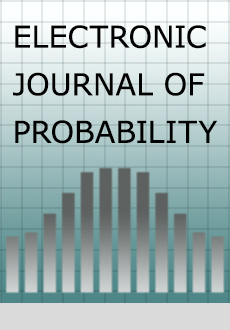Abstract
The best known lower and upper bounds on the mixing time for the random to-random insertions shuffle are $(1/2-o(1))n\log n$ and $(2+o(1))n\log n$. A long standing open problem is to prove that the mixing time exhibits a cutoff. In particular, Diaconis conjectured that the cutoff occurs at $3/4n\log n$. Our main result is a lower bound of $t_n = (3/4-o(1))n\log n$, corresponding to this conjecture. Our method is based on analysis of the positions of cards yet-to-be removed.We show that for large $n$ and $t_n$ as above, there exists $f(n)=\Theta(\sqrt{n\log n})$ such that,with high probability, under both the measure induced by the shuffle and the stationary measure, the number of cards within a certain distance from their initial positionis $f(n)$ plus a lower order term. However, under the induced measure, this lower order term is strongly influenced bythe number of cards yet-to-be-removed, and is of higher order than forthe stationary measure.
Citation
Eliran Subag. "A lower bound for the mixing time of the random-to-random Insertions shuffle." Electron. J. Probab. 18 1 - 20, 2013. https://doi.org/10.1214/EJP.v18-1950





